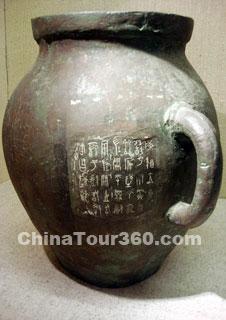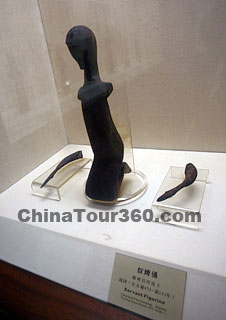Compared with the Spring and Autumn Period, the Warring States Period was an even more turbulent age. Old traditions and systems were cast off, and new ones established. After numerous wars, the more powerful states annexed the smaller ones. In the end, seven powerful states coexisted with each other. They were Qi, Chu, Yan, Han, Zhao, Wei and Qin. In Chinese history, they are known as 'the Seven Overlords in the Warring States Period'.
The Warring States Period, also known as the Era of Warring States, covers the period from 476 BC to the unification of China by the Qin Dynasty in 221 BC. It is nominally considered to be the second part of the Eastern Zhou Dynasty, following the Spring and Autumn Period, although the Zhou dynasty itself ended in 256 BC, 35 years earlier than the end of the period. As with the Spring and Autumn Period, the king of Zhou acted merely as a figurehead. The name Warring States Period was derived from the Record of the Warring States, a work historically compiled early in the Han Dynasty.
|
|
It was was a period when regional warlords annexed smaller states around them and consolidated their rule. The process began in the Spring and Autumn Period, and by the 3rd century BC, seven major states had risen to prominence. Those Seven Warring States were the Qi , the Chu, the Yan, the Han, the Zhao, the Wei and the Qin. Another sign of this shift in power was a change in title: warlords once considered themselves dukes of the Zhou Dynasty emperor; but now the warlords began to call themselves kings, meaning they were equal to the Zhou Emperor.
The Warring States Period saw the proliferation of iron working in China, replacing bronze as the dominant metal used in warfare. Areas such as Shu (currently Sichuan) and Yue (currently Zhejiang) were also brought into the Chinese cultural sphere during this time. Different philosophies developed into the Hundred Schools of Thought, including Confucianism (elaborated by Mencius), Taoism (elaborated by Lao Zi and to a lesser extent Zhuang Zi, in that it is possible to see the philosophy espoused in the text of the Zhuang Zi as separate from what could be considered 'classical Daoism'), Legalism (formulated by Han Feizi) and Mohism (formulated by Mozi). Trade also became important, and some merchants had considerable power in politics.
Military tactics also changed. Unlike the Spring and Autumn Period, most armies in the Warring States Period
 |
| A Statue of Sun Bin |
This was also around the time the legendary military strategist Sun Tzu (Sun Zi) wrote The Art of War which is recognized today as the most influential, and oldest known military strategy guide. Along with this are other military writings that make up the Seven Military Classics of ancient China: T'ai Kung's Six Secret Teachings, The Methods of the Sima, Sun Bin's Art of War, Wu Qi, Wei Liaozi, Three strategies of Huang Shigong, and The Questions and Replies of Tang Taizong and Li Weigong. Once China was unified, these seven military classics were locked away and access was restricted due to their tendency to promote revolution.
![]() Go to the Qin Dynasty
Go to the Qin Dynasty









